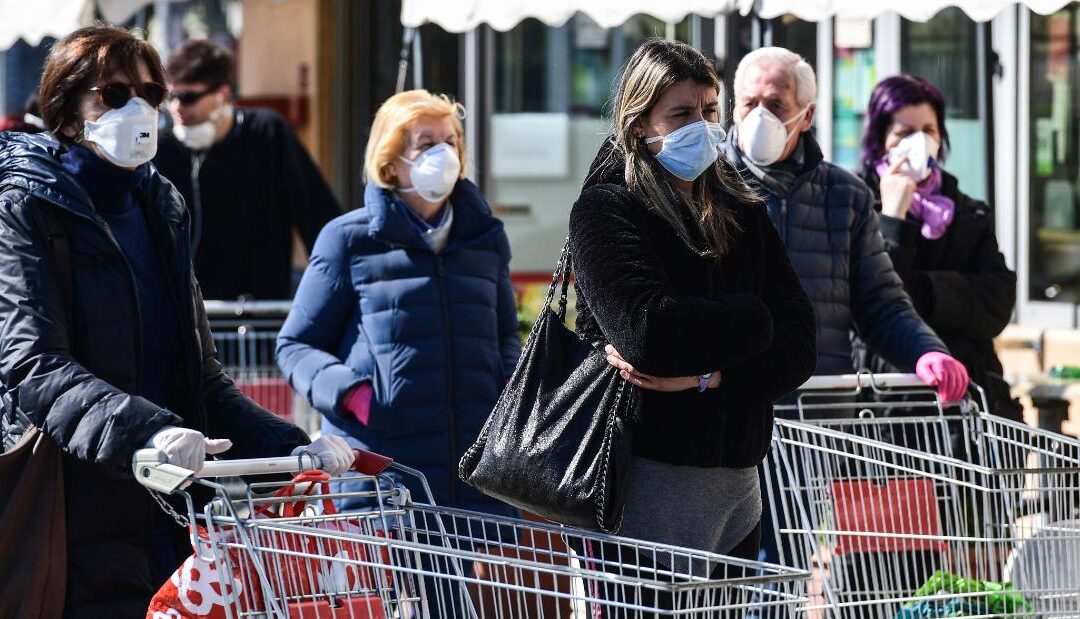There is nearly no place in America where Covid-19 case counts are trending in the right direction as the country heads into what health experts say will be the most challenging months of the pandemic.
The US is averaging more than 55,000 new cases a day — up more than 60% since a mid-September dip — and experts say the country is in the midst of the dreaded fall surge.
On Friday, the US reported the most infections in a single day since July.
As of Saturday, more than 8.1 million cases of the virus had been reported in the US and 219,286 people have died, according to Johns Hopkins University.
Only Missouri and Vermont recorded a more than 10% improvement in the average number of reported cases over the past week, according to the university’s data.
Cases in Connecticut and Florida, on the other hand, increased by 50% or more.
Twenty-seven states saw spikes between 10% and 50%: Alabama, Arizona, Colorado, Georgia, Idaho, Illinois, Indiana, Iowa, Kansas, Massachusetts, Michigan, Minnesota, Mississippi, Nebraska, Nevada, New Jersey, New Mexico, North Dakota, Ohio, Rhode Island, South Carolina, South Dakota, Texas, Washington, West Virginia, Wisconsin and Wyoming.
Illinois Gov. J.B. Pritzker said today that his state was not going in the right direction when it came to fighting the coronavirus, attributing its failures to President Trump’s allies.
“People are not following the mitigations, because the modeling is so bad at the leadership level, the federal level,” Pritzker said. “We are trying to get the word out and you’re trying to continue to convince people to do the right thing but it is the president’s allies in our state, all across the state, who are simply saying to people don’t pay any attention to the mitigations, don’t follow the rules.”
Illinois recently broken its record for the most cases recorded in a single day with over 4,500 people testing positive on Friday.
On Friday, 10 states reported their highest one-day counts: Colorado, Idaho, Indiana, Minnesota, New Mexico, North Carolina, North Dakota, West Virginia, Wisconsin and Wyoming, according to Johns Hopkins.
As infections rise, so, too, have hospitalizations.
In New Mexico, hospitalizations have increased 101% this month, Gov. Michelle Lujan Grisham said.
More hospitalizations will likely be followed by a rise in daily coronavirus deaths, said Dr. Francis Collins, director of the National Institutes of Health.
Dr. Scott Gottlieb, former commissioner of the Food and Drug Administration, warned today that the current wave of new coronavirus infections is likely to be the “biggest wave” the nation experiences before a vaccine.
“We’re going to have to endure this wave of spread right now,” Gottlieb said. “And it’s probably likely to be the biggest wave that we endure without the benefit of a vaccinated population.”
There have been more than 8.1 million confirmed cases of the coronavirus in the United States, and the death toll is approaching 220,000, according to Johns Hopkins University. Hospitalizations are rising in 42 states, and 45 states have expanding epidemics, Gottlieb said.
“There’s really no backstop against the spread that we’re seeing,” he said, adding that this is the “most difficult phase of this epidemic.”
Gottlieb said the current uptick in coronavirus infections is occurring as states have left measures in place to mitigate the spread of the virus, including requiring masks in public and indoors, encouraging social distancing and limiting the number of people in restaurants and bars.
“If we weren’t taking those steps, if people weren’t wearing masks generally and some states weren’t adhering to some mitigation tactics and we weren’t testing and tracing, then we’d have much worse spread,” he said.
The latest surge in coronavirus cases comes as millions prepare to go to the polls for early voting or to cast their ballots on November 3, though election officials are encouraging voters to vote by mail or develop a plan to ensure they can cast their votes safely.
Gottlieb said precautions are being taken at polling places and warned the “biggest risks” are settings where people are more comfortable and may let their guards down.
“When you talk to the governors about where the spread is occurring, it’s occurring in congregate settings where people feel more comfortable, a local Elks Club, a large family gathering,” he said.
While coronavirus infections are rising, President Trump has returned to the campaign trail, holding large rallies with thousands in attendance, many of whom have not worn masks. Mr. Trump himself was diagnosed with the coronavirus this month and spent three days being treated for COVID-19 at Walter Reed National Military Medical Center.
Gottlieb said the actions from the Trump campaign are “problematic” and questioned what the strategy from the White House is to combat the spread of the coronavirus.
“They’ve come out against universal masking. They’ve come out against testing asymptomatic and mildly symptomatic people. They say testing should be reserved just to the vulnerable. They want businesses and schools reopened, as we all do, and they’re against targeted mitigation like closing restaurants,” Gottlieb said of the White House. “There was criticism of New York when New York kept the restaurants closed. So it begs the question, what is the strategy? And I think the strategy is just to endure the spread until we get to that vaccine.”
It’s unlikely, however, that a coronavirus vaccine will be available to the general population until well into 2021.
